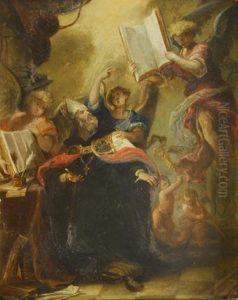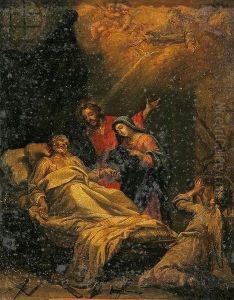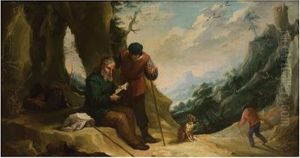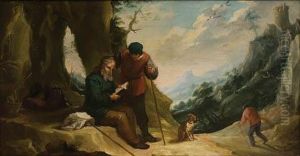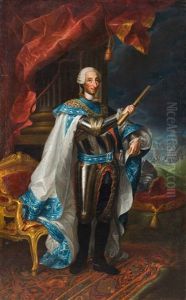Andres De La Calleja Paintings
Andrés de la Calleja was a Spanish painter born in 1705 in Rioja, a region in the north of Spain. He is primarily known for his religious works and portraits. Calleja's contributions to art are often associated with the late Baroque and early Rococo periods, reflecting the transition in styles during the 18th century.
Calleja's early life and training are not extensively documented, but it is known that he developed his artistic skills in the tradition of the Spanish Baroque. He was influenced by the works of the great Spanish artists of the preceding century, such as Diego Velázquez and Bartolomé Esteban Murillo. Calleja's style, however, began to exhibit the lighter tones, softer lines, and the increased playfulness characteristic of the Rococo movement that was sweeping through Europe at the time.
In his mature career, Calleja became known for his skill in portraiture, capturing the likeness and personality of his subjects with a degree of sensitivity and finesse. His religious paintings often featured biblical and saintly figures imbued with a humane quality, bringing a sense of accessibility and empathy to these traditional subjects. His work was sought after for churches and private collections, indicating his success as an artist during his lifetime.
Although Calleja may not be as widely recognized as some of his contemporaries, he left a considerable body of work that contributes to our understanding of Spanish art during a period of stylistic evolution. His paintings can be found in various churches and museums, providing a window into the artistic and cultural shifts that were occurring in 18th-century Spain.
Andrés de la Calleja passed away in 1785. The exact circumstances of his death are not well-recorded, but his legacy lives on through his art, which continues to be studied and appreciated for its blend of Baroque intensity and Rococo elegance.
